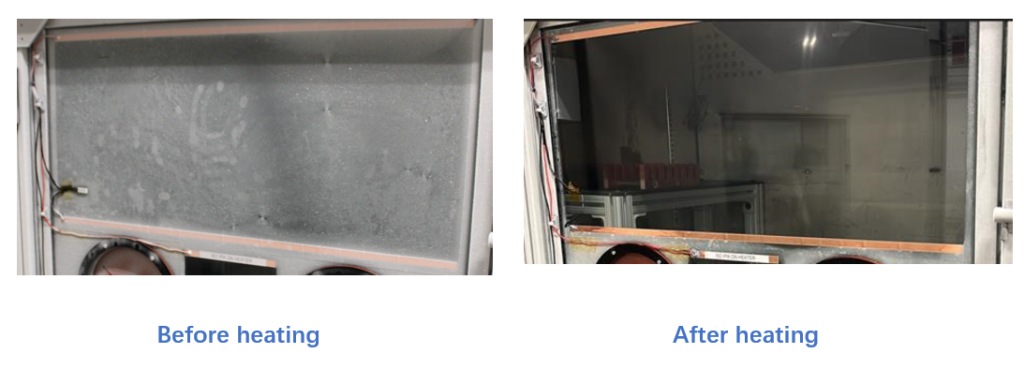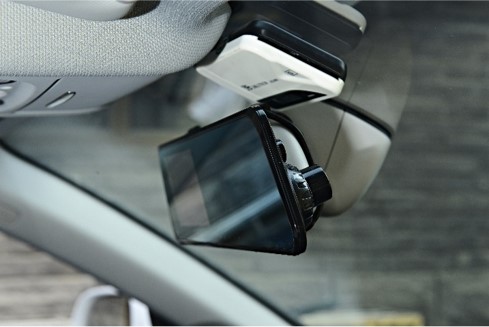Railway cameras play a vital role in train safety, platform monitoring, signal inspection, and onboard surveillance. However, when temperatures change rapidly or humidity rises, these cameras often suffer from fogging on their protective glass. Once fog appears, image quality drops immediately, and the entire monitoring system becomes unreliable.
A transparent heating film gives railway operators a simple and effective way to keep camera windows clear. This blog explains why fog forms, what failures it causes, and why transparent heaters are the most reliable long-term solution for railway environments.
Fog forms when the glass surface becomes colder than the surrounding humid air. Railway environments create ideal conditions for this problem:
Once the glass cools below the dew point, moisture condenses instantly. These tiny droplets scatter light and distort the image, making critical visual information unclear.

Fog on railway camera lenses leads to several operational problems, including:
In railway operations, every frame matters. Any loss in clarity can lead to delays, safety risks, or failed monitoring tasks.
Transparent heaters are ideal for railway cameras because they solve the root cause of fog: glass temperature.
Unlike coatings, fans, or external heaters, a transparent heating film:
Transparent heaters keep the camera glass slightly warmer than the ambient air. This stabilizes the surface temperature and prevents condensation, ensuring consistent visibility in all weather conditions.

Transparent heaters use a conductive coating—often ITO (Indium Tin Oxide), metal mesh, or silver nanowire—to generate mild, uniform heat across the glass.
Here’s what happens when the heater is powered:
The heating process is quick and controlled. Fog clears in seconds, and the window stays clear even during rain, cold wind, or rapid temperature shifts.
Transparent heaters designed for railway applications typically offer:
These features make the heater suitable for trains, platforms, tunnels, crossings, and onboard monitoring systems.

At Danyu Electronics, the smallest transparent heating film we can manufacture is:
This size is suitable for compact railway cameras, sensor windows, or narrow viewing ports.
For most railway applications, engineers typically choose heater sizes such as:
We can tailor the heater to fit any glass shape, including square, round, rectangular, and curved designs, ensuring perfect compatibility with your camera housing.
Installation depends on your camera design, but common methods include:
1. Direct Adhesive Bonding
The heater attaches to the inner surface of the glass using optical-grade adhesive.
2. Lamination Inside Camera Window
The film is laminated between two layers of glass for extra durability.
3. Front-Surface Installation
Suitable for housings where the inner surface is not accessible.
4. Integrated Power Connection
The heater connects to the camera’s existing 12V or 24V power system.
We support engineering teams with drawings, installation guides, and sample testing to ensure perfect fit.
| Specification | Typical Value |
| Transparency | 85–92% |
| Thickness | 0.08–0.25 mm |
| Voltage Options | 5V / 12V / 24V / 48V |
| Power Density | 0.4–1.2 W/cm² |
| Heating Time | 5–15 seconds to clear fog |
| Operating Temperature | −40°C to +85°C |
| Material Options | ITO, metal mesh, silver nanowire |
| Waterproof Rating | Up to IP65 with edge sealing |
| Shapes | Square, round, curved, custom cut |
Custom solutions are available for different camera models, terrains, climates, and outdoor exposure conditions.
Danyu Electronics specializes in engineering and manufacturing transparent heating films for harsh environments such as railway systems, transportation hubs, and outdoor surveillance.
Our strengths include:
We help railway camera manufacturers improve visibility, reliability, and operational safety.
1. Will the heater affect camera clarity?
No. High-transparency materials maintain the optical path without glare or distortion.
2. How fast can it clear fog?
Typically within 3–6 seconds depending on glass thickness and ambient temperature.
3. Can the heater survive winter snow and freezing rain?
Yes. It is designed for –40°C environments and frequent freeze–thaw cycles.
4. What voltages are available?
We support 12V, 24V, and 48V systems commonly used in railway equipment.
5. Can you customize the shape?
Yes. We can produce irregular shapes, curved outlines, and dome-window heaters.
6. Will it withstand long-term vibration?
The adhesive and conductive layer are selected to survive long-term rail vibration without cracking or peeling.
Simply drop your email or phone number in the contact form, and we'll promptly reply you shortly.